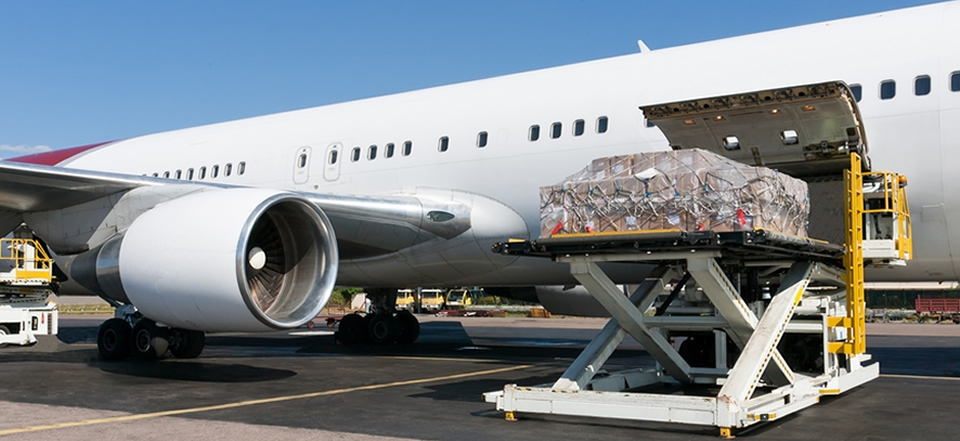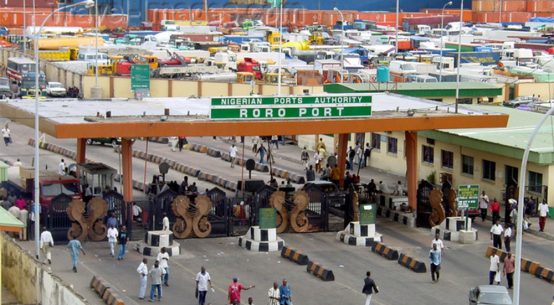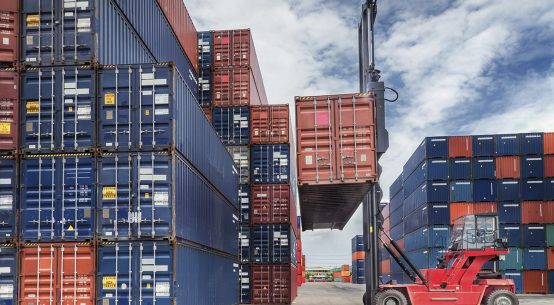Demand for air freight is still extremely strong. Soaring yields and the backlogs building in Asian hubs offer ample testimony to that. We are clearly in the middle of a great peak season, and anyone who didn’t book space long ago is suffering.
But the rate of growth is falling.
As we predicted back in August, even though worldwide airfreight demand stayed strong in September, the rate of growth began to fall, with WorldACD and IATA agreeing on a year-over-year increase of about 9%. The second part of that prediction was that the y-o-y growth rate would decelerate further in the following months, and, given the data now available from many of the world’s major cargo carriers and airports, that is exactly what is happening.
Imagine your Ad placed here
While the percentages in the chart above clearly show continued growth in air freight demand in October, they are well down from what they were in September, and even further down from the double-digit percentages we have seen through much of this year.
Looking back at 2016, air freight demand growth was negative at the beginning of the year, turning positive in April, with low single-digit year-over-year gains through August. But in September, growth began to accelerate, up 6.1% in that month, and then 8.2%, 6.8%, and 9.8% in October, November, and December, respectively. With these tougher comparisons, the gains in current and future months will inevitably come down to earth, but, as we said at the beginning, demand itself remains strong, and as long as carriers continue to manage capacity wisely, they will continue to enjoy the benefits of that strong demand.
We will update this post when we have more results (Hong Kong International, Cathay Pacific, and Air China have not yet reported), but we expect that when IATA and WorldACD publish their detailed analyses of cargo traffic worldwide in two weeks, we will see growth in mid-single digits.
Now for the details…
Africa
An IATA report early October had praise African carriers’ improving performance in 2017, month-on-month. The region posted the largest year-on-year increase in demand of all regions in August 2017 with freight volumes growing 29.4%. This is a slight slowdown from July but still more than three times the five-year average pace of growth of 8.8%. Capacity increased by 5.9% over the same period. Demand has been boosted by very strong growth on the trade lanes to and from Asia which increased by more than 67% in the first half of the year.
Asia Pacific
Shanghai Pudong International Airport Cargo Terminal Co Ltd (Pactl) reported its October handle up 10.1% y-o-y to 169,000 tonnes, well down from the 15.9% gain in September, and its smallest year-over-year gain since April. However, we point out that this is a drop-off in demand growth, not of a fall-off in demand itself. In fact, we believe Pactl’s October cargo handle may be all-time record – not just for October, but for any month. But, with a much tougher comparison month in October 2016, the rate of growth has fallen. International volume for the month was up 11.1% to 160,000 tonnes, while the much smaller domestic volume was down 6.8% to 10,000 tonnes (Pactl handles very little of PVG’s domestic cargo). For the first ten months of 2017, Pactl’s handle was up 12.6% to 1.53 million tonnes.
Guangzhou-based China Southern Airlines reported October cargo traffic up 6.8% y-o-y to 593 million RTKs. This is down from the 16% to 23% growth the carrier has reported in recent months, although it still leaves China Southern’s year-to-date cargo traffic up 15.4% over 2016, at 5.74 billion RTKs. International traffic growth was fairly strong in October, up 13.5% y-o-y to 452 million RTKs, but a 10.3% drop in domestic traffic to 140 million RTKs brought the total down.
Taiwan-based China Airlines reported October cargo traffic up 5.9% y-o-y to 513 million RTKs, the fourteenth consecutive month of increased traffic after a long period of declining demand. And while the percentage growth rate may have fallen (against a tougher comparison) China Airlines’ cargo revenue continues to grow strongly, up 19.5% y-o-y in October. Year-to-date, CAL’s cargo traffic was up 7.9% to 4.69 billion RTKs, and cargo revenue was up 20.5%.
Taiwan-based EVA Air reported October cargo traffic down 6.3% y-o-y to 315 million RTKs, the carrier’s first negative result after sixteen months of gains. However, EVA’s cargo yield continues to grow strongly and cargo revenue for the month was up 2.5%, despite the significant drop in traffic. For the first ten months of the year, EVA’s cargo traffic was up 4.4% to 3.06 billion RTKs, while cargo revenue rose 10.4%.
South Korea’s Incheon Airport reported its October cargo handle down 2.5%, to 247,000 tonnes. For the first ten months of 2017, ICN’s handle was up 8.0% to 2.40 million tonnes.
Europe & Middle East
Lufthansa reported Group cargo traffic up 2.4% y-o-y in October to 973 million RTKs, the lowest growth rate since the carrier reported 0.7% y-o-y growth in August 2016. Traffic on the trans-Atlantic lane grew 4.3% to 426 million RTKs, but traffic to/from the Asia-Pacific region was up just 0.5% to 440 million RTKs. The strongest growth for the month – a 6.6% increase – was in traffic to/from the Middle East/Africa region, but the total of 74 million RTKs was relatively small. For the first ten months of 2017, Lufthansa Group’s cargo traffic was up 7.3% to 8.96 billion RTKs.
Air France-KLM Martinair reported October cargo traffic up 1.2% y-o-y to 766 million RTKs. Air France reported October traffic up 4.7% to 332 million RTKs, but a 1.4% decline in KLM’s traffic to 434 million RTKs dragged the group result down. For the year through October, AF-KLM’s cargo traffic was up 1.3% to 7.08 billion RTKs.
International Airlines Group reported October cargo traffic up 4.6% y-o-y to 527 million RTKs. Subsidiary carrier British Airways reported October cargo traffic up 5.5% to 403 million RTKs, while Spain-based Iberia’s cargo was down 0.9% to 110 million RTKs. Ireland-based Aer Lingus reported October cargo traffic up 27.3% to 14 million RTKs. For the first ten months of 2017, IAG’s cargo traffic was up 5.7% to 4.75 billion RTKs.
Turkish Airlines reported October cargo volume up 21.6% y-o-y to 106,000 tonnes. Turkish has reported the strongest year-over-year growth among major carriers for several years now, and while September’s 21.6% is one of its smallest year-over-year gains this year, it is not all that much below the carrier’s year-to-date increase of 26.3% to 917,000 tonnes.
Frankfurt Airport (FRA) reported its cargo handle up 0.8% y-o-y to 195,000 tonnes in October. For the first ten months of 2017, FRA’s handle was up 4.3% to 1.85 million tonnes.
Amsterdam’s Schiphol Airport reported its October handle up 0.9% y-o-y to 155,000 tonnes. For the first ten months of the year, Schiphol’s handle was up 7.4% to 1.47 million tonnes.
London’s Heathrow Airport (LHR) reported its October handle up 9.2% to 154,000 tonnes. Year-to-date, LHR’s handle was up 10.3%, to 1.40 million tonnes.
Americas
After five months of small year-over-year increases in air freight demand, Chile-headquartered LATAM Airlines Group returned to its long-standing pattern of declines, reporting October cargo traffic down 2.9% y-o-y to 318 million RTKs. For the year to date, LATAM’s cargo traffic is down 1.5% compared to 2016, at 2.78 billion RTKs.
United Airlines reported October cargo traffic up 12.3% y-o-y to 450 million RTKs, its nineteenth consecutive month of strong gains. Year-to-date, United’s cargo traffic was up 18.5% to 3.96 billion RTKs.
The turnaround plan at Delta Air Lines continues to pay off. The Atlanta-based carrier reported October cargo traffic up 8.5% y-o-y to 287 million RTKs – its seventh consecutive monthly y-o-y gain after years of declining demand. This brings Delta’s cargo traffic for the year to 2.64 billion RTKs, up 9.2% over the first ten months of 2016.
With reports from Air Cargo World









